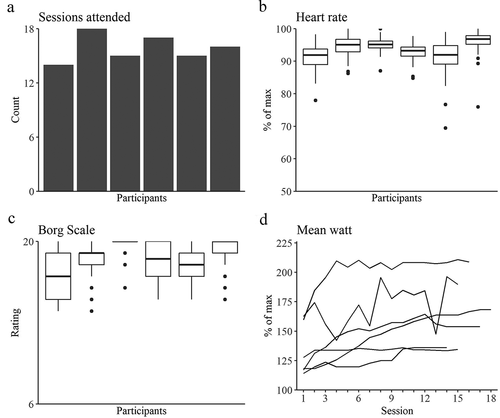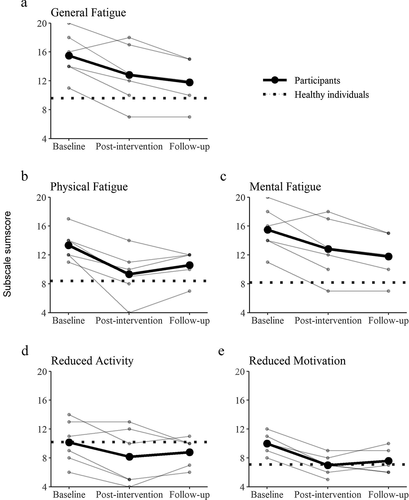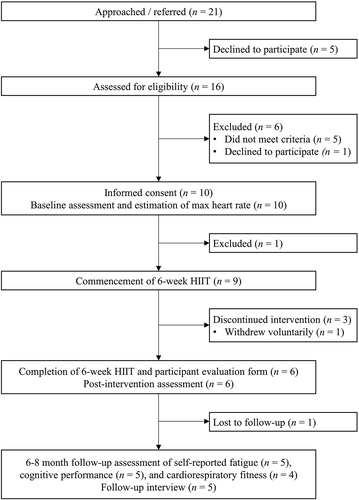Figures & data
Table 1. Procedures of the high intensity interval training program
Table 2. Baseline characteristics
Table 3. Minutes of weekly physical activity and exercise in the study period
Figure 2. Indicators of feasibility and adherence during high intensity interval training.

Table 4. Changes in study outcomes of six individuals with acquired brain injury receiving high intensity interval training
Figure 3. Raw and mean scores on the multidimensional fatigue inventory.



